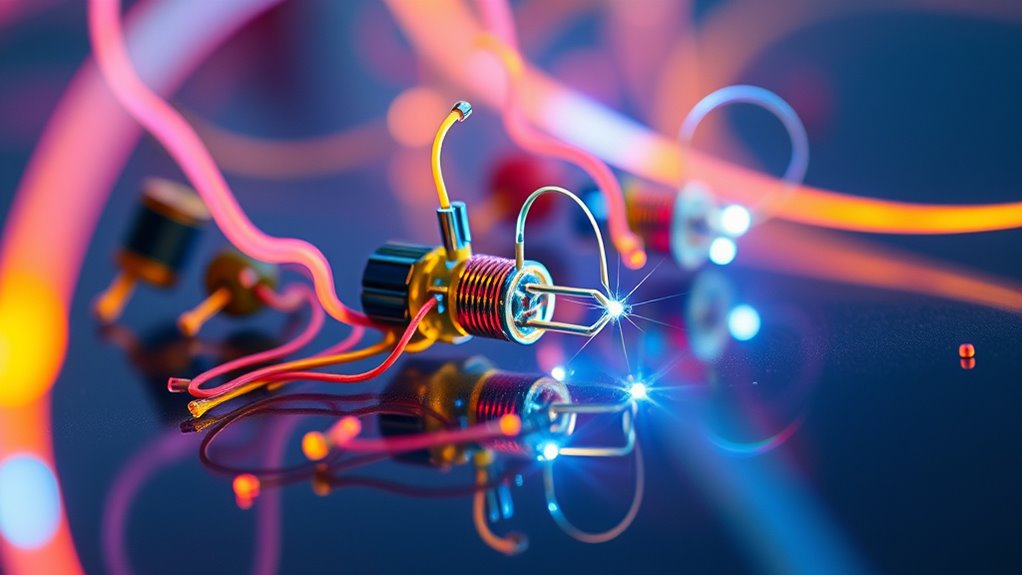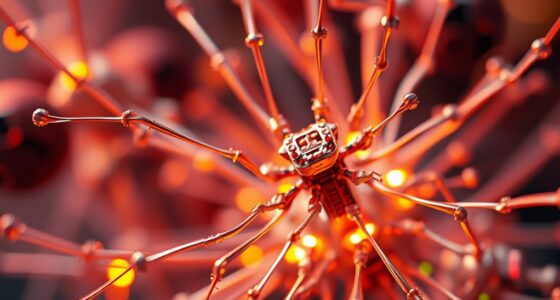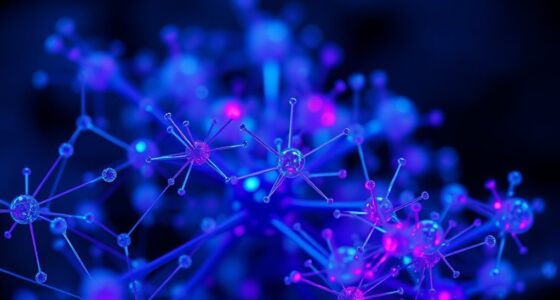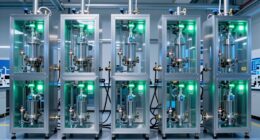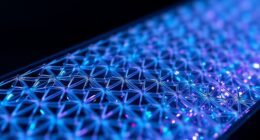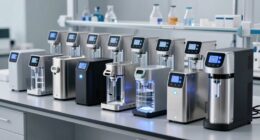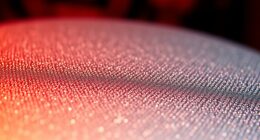You can power nanomachines using chemical reactions like those involving hydrogen peroxide, which release energy through molecular changes, or by harnessing light energy through photonic activation, where light excites nanomaterials to perform tasks. Electric power, supplied by tiny circuits or external fields, enables precise control and rapid responses. Each source offers unique advantages for different applications. If you keep exploring, you’ll discover how these energy methods work together to make nanomachines versatile and efficient.
Key Takeaways
- Chemical power uses reactive molecules like hydrogen peroxide to produce energy through molecular reactions at the nanoscale.
- Light-driven nanomachines harness photonic activation, where light absorption triggers controlled movements or tasks.
- Electric power provides precise control via microelectronic components, enabling complex functions and rapid responses.
- Combining these energy sources allows nanomachines to operate efficiently in diverse environments and applications.
- Advances in nanotechnology aim to optimize energy management for safety, autonomy, and broader usability.
Chemical Power: Harnessing Molecular Reactions
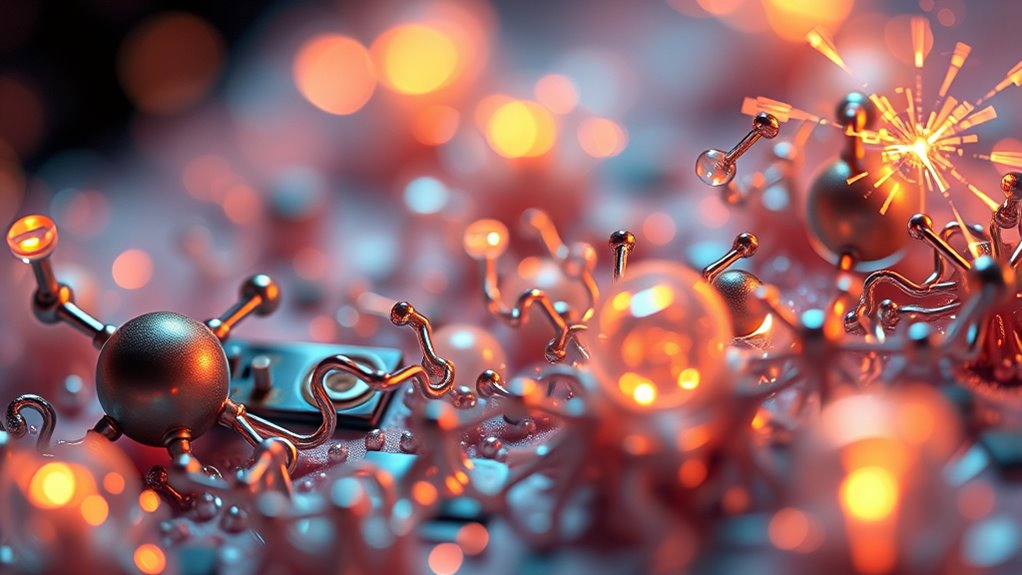
Have you ever wondered how nanomachines power their tiny operations? They often rely on chemical power by harnessing molecular reactions. This process involves tiny fuel molecules that undergo specific reactions to release energy. When these molecules interact with catalysts or other nanostructures, they produce movement or force needed for operation. For example, nanomachines can use hydrogen peroxide or other reactive compounds as fuel. The chemical reactions generate localized energy, propelling parts of the nanodevice or enabling its functions. This method offers a high energy density, making it efficient for nanoscale tasks. Additionally, the reaction kinetics of these processes are critical to optimize performance and safety. However, controlling these reactions precisely is critical to prevent unwanted side effects. Chemical power remains a promising approach because it mimics natural biological processes, offering reliable and efficient energy at the nanoscale.
Light-Driven Energy: Photonic Activation of Nanomachines
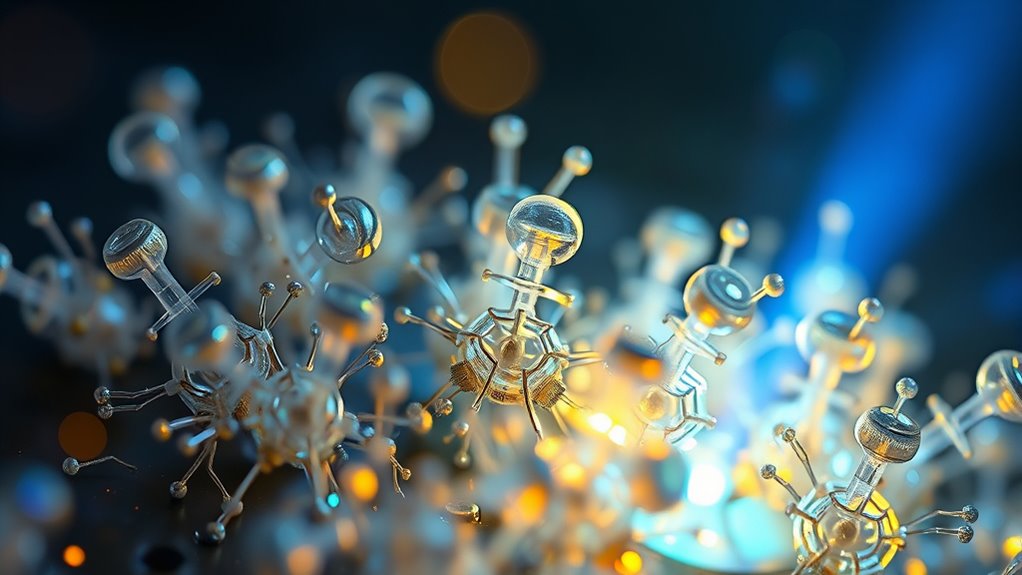
Building on chemical power, nanomachines can also harness light to generate energy through photonic activation. When exposed to specific wavelengths, light interacts with nanomaterials, triggering controlled movements or reactions. This process involves three key steps:
Nanomachines harness light energy through photonic activation for precise, chemical-free operation.
- Light absorption occurs at a molecular or atomic level, exciting electrons to higher energy states.
- The excited electrons transfer energy to the nanomachine, initiating mechanical or chemical actions.
- The nanomachine responds by performing tasks like transport, assembly, or propulsion, all powered by photon energy.
- Advances in nanomaterial design enhance the efficiency and responsiveness of photonic activation, broadening potential applications.
This method allows precise control using light, enabling nanomachines to operate remotely without direct contact or chemical fuels. Photonic activation offers a clean, renewable energy source, making it promising for various nanotechnological applications.
Electric Power: Microelectronic Energy Sources
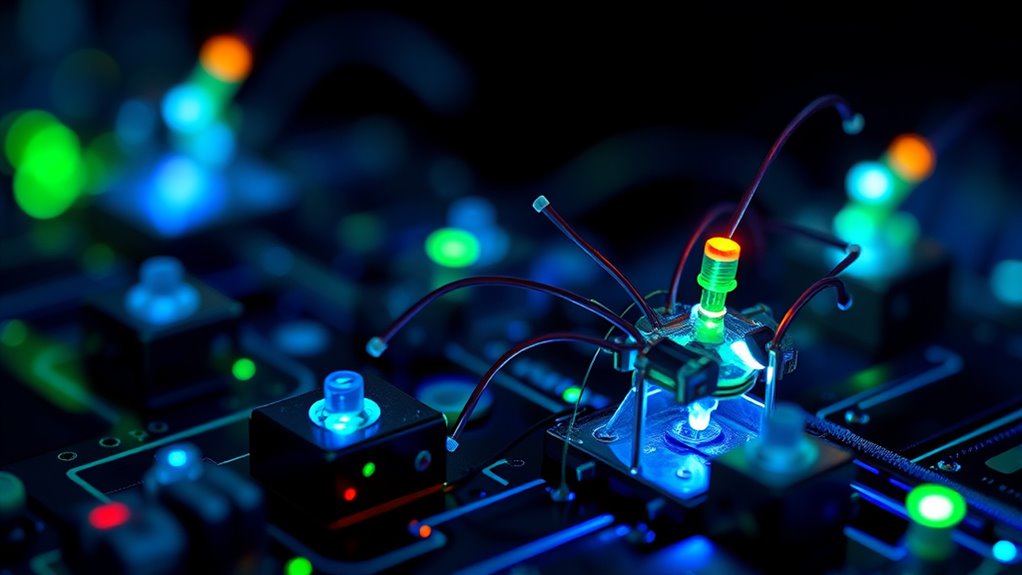
Electric power serves as a critical energy source for nanomachines, especially through microelectronic components that enable precise control and rapid response. You rely on miniature circuits and transistors to process information and execute tasks efficiently. These tiny components are designed to operate with minimal energy loss, often powered by batteries, capacitors, or external electrical fields. Advances in nanofabrication allow you to integrate complex electronic systems directly onto nanomachines, enhancing their capabilities. You can harness electric power for sensing, actuation, or communication functions at the nanoscale. However, managing power consumption is essential to avoid overheating or depletion. As technology progresses, your ability to utilize microelectronic energy sources will improve, making nanomachines more autonomous, versatile, and effective in diverse environments.
Frequently Asked Questions
How Do Nanomachines Regulate Energy Intake and Expenditure?
You control nanomachines’ energy intake and expenditure through intricate sensors and feedback systems. When energy levels drop, they activate their fuel sources, such as chemical reactions, light absorption, or electric power, to recharge. Simultaneously, they regulate activity based on energy availability, turning off or reducing functions to conserve power. This precise management guarantees they operate efficiently, adapting to varying energy supplies and task demands automatically.
What Are the Safety Concerns With Nanomachine Power Sources?
Did you know that over 80% of nanomachine research focuses on safety? When it comes to power sources, safety concerns include potential toxicity from chemical fuels, unintended activation from light or electric energy, and overheating risks. You should guarantee proper containment, control mechanisms, and compatibility with biological systems to prevent harm. Addressing these risks is vital to safely deploy nanomachines in medical, environmental, or industrial applications.
Can Nanomachines Switch Between Different Energy Types?
Yes, nanomachines can switch between different energy types. This flexibility allows them to adapt to various environments and tasks, enhancing their efficiency. You might program them to use chemical energy in one setting, then switch to light or electrical power when conditions change. This versatility improves their functionality and reduces limitations, making nanomachines more effective in complex applications like medical treatments or environmental monitoring.
How Efficient Are These Power Sources at the Nanoscale?
Think of these power sources as tiny fuel tanks—each one has its own strengths and limitations. Chemical energy is highly efficient, like a well-oiled machine, but can produce waste. Light energy offers rapid response but depends on external illumination. Electric power provides precise control but might be less efficient at the nanoscale. Overall, their efficiency varies, but advancements are making them more effective for diverse nanomachine tasks.
What Are the Environmental Impacts of Nanomachine Energy Consumption?
You should consider that nanomachines’ energy use can impact the environment through waste or unintended reactions. Chemical power might produce harmful byproducts, light sources could generate excess heat or light pollution, and electrical energy may strain power grids or cause electromagnetic interference. It’s essential you develop cleaner, more sustainable energy methods to minimize these effects, ensuring nanomachines remain beneficial without harming ecosystems or human health.
Conclusion
As you explore the different fuel sources for nanomachines, you’ll notice how chemistry, light, and electricity seamlessly intertwine in their design. It’s almost coincidental how molecular reactions, photonic activation, and microelectronics all serve as powerful energy sources, each complementing the other. This interconnectedness hints at a future where nanomachines could harness multiple energy forms simultaneously, opening exciting possibilities you might not have expected. The more you learn, the more you realize how these energy sources are surprisingly linked.
